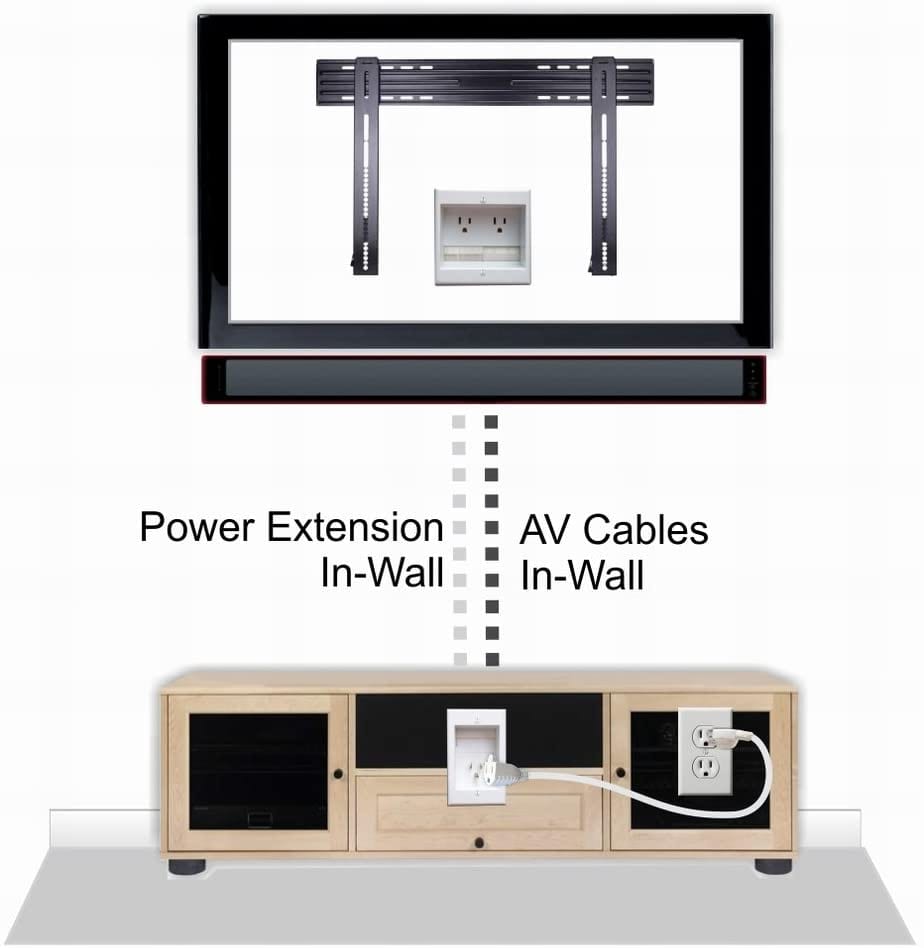

We had no trouble sanding off the painted details, but the giant oval sections of wood putty behind each of the 6 outer knobs was never going to blend well (such large portions of wood putty just don’t take stain the same way that wood does). Our original hope was to refinish it with stain just like the one we have downstairs, but when we saw it in person we realized that wasn’t a wise plan. Sold to the couple with a thing for dressers-turned-media-cabinets! With that critical detail out of the way, we continued the theme of “well, if we like our downstairs set-up so much…” and stumbled upon this 9-drawer mid-century dresser on Craigslist for $120. Three cheers for a simple selection process. We chose this 50″ Vizio television since we’ve liked our Vizio downstairs and this one was also well reviewed.

The TV was actually purchased way before the room was even finished. Back during the holidays we scored a 20% off Target coupon for one item in the store (and it didn’t say “excluding electronics” – woot!). Plus, as we’ve learned after the fact, it’s nice that it faces away from the room’s door because you can’t hear it down the hall. There was really only one wall that made sense for the TV in this room, since it was just about the only windowless and slanted-ceiling-less wall in the space (it sits across from the built-ins we shared last month). Adding an infrared receiver (we used this $14 IR receiver from Amazon)īut before we could worry about hiding the TV wires, we had a couple of things to check off our list first.Getting our power strip off the floor (we already had one, so this step was free).Installing an in-wall cord system (we used this $40 all-in-one DIY kit from Home Depot).Mounting the TV to the wall (we used this $18 mounting hardware from Amazon).So we thought we’d break down the 4 steps that we took to hang our TV, eliminate every visible cord, and hide the cable box.Īll-in-all, these four steps cost us less than $75 and none took more than an hour to execute (a couple only took a few minutes). But in adding a television, we didn’t want to create Cordfest 2016, and have always wanted to try mounting a TV on the wall.
#Hide tv cable movie
These input and output locations can be caused by the number of speakers you run, projectors, or home theater connection to your other rooms.įor example, if the projector is located far away from your mounted TV, you will have to run the cables and cords together with multiple input-output points.Īlso, if you have wired connections to a different room, you need to ensure the rooms share the same wall when running the wires inside your walls.While our recently-finished bonus room upstairs was never intended to be a dedicated “media room” or “theater room,” we always knew it’d make a great spot for special family movie nights. The more wired connections you need, the more wires you’ll need to conceal. What are all the input-output locations for your TVs’ electronics?Īlthough this might seem obvious, the number of input and output locations will affect how you conceal your cords. However, they may not fully conceal the TV wires. Simple methods are much less work and cost less. In contrast, hiding wires without cutting the wall simply means using plastic rails, and covers or hiding them behind furniture or under the carpet. Running wires inside the wall is much more of a hassle compared to running the cables on the wall.įeeding the wires inside the wall requires accurate measurements, the right tools, and cutting perfect holes from the back of your TV to the electrical outlet.

Will you run wires inside the wall or on a wall?


 0 kommentar(er)
0 kommentar(er)
